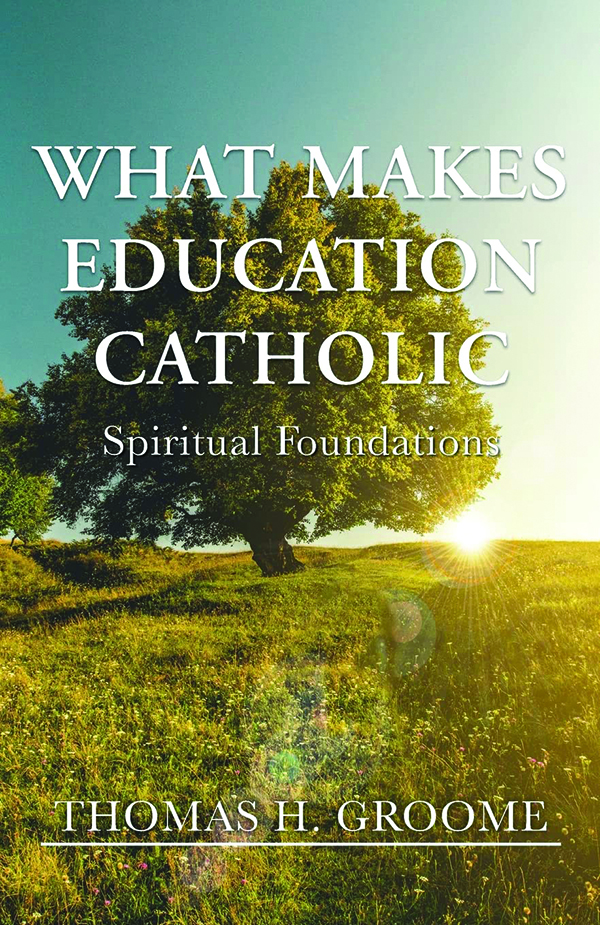
Book review: ‘What Makes Education Catholic’
“What Makes Education Catholic.” By Thomas H. Groome. New York: Orbis Books, 2021. 264 pages. Paperback: $24; Kindle: $18.33; eBook: $14.99.
Although this book, “What Makes Education Catholic,” is obviously of interest to Catholic educators from pre-school to college level and beyond, that does not mean that someone who is not a teacher would not find value in it. In order for education to be truly Catholic, it has to arise from and adhere to a Catholic mindset and world view, and that is an important thing for anyone who professes the Catholic faith to understand. To teach as a Catholic educator means to be thoroughly grounded in the faith, and this book provides, as the subtitle indicates, a comprehensive “Spiritual Foundation.”
A word before we concentrate on the educators who would profit from reading this book: One of the things that readers who are not involved in the classroom can take away from Groome’s work is a very concise but informative history of the Church itself. When he sets out to lay the foundations of what a good Catholic education looks like, the author begins at the beginning; Chapter One of Part One is entitled “To Teach as Jesus Did.” From there he moves through what he calls the Depths of Tradition, from the teaching of the Apostles and the Apostolic Fathers to such intellectual and spiritual giants as Sts. Augustine, Benedict, and Thomas Aquinas.
All of this comes full circle in Part Three, in which the teachings and traditions of the Church find their rightful place, not just in the community of believers, but the community that we know as the world. Ultimately, he concludes, the Catholic faith is not something that forms and informs only Catholics, but is of value to society as a whole. As the author, senior professor of theology and religious education at Boston College, says in Chapter Nine, “Catholic education has a crucial sociopolitical role; it must educate its students to become citizens who bring their faith into the public square and put it to work toward the common good of all.”
For educators, an important part of this book is not just the information and inspiration it contains but also the fact that it provides the space in which to reflect upon and integrate what has been shared into the living out of the Catholic educational experience. Each chapter ends with what I think is a heartening way of phrasing this: “Renewing Your Vocation as a Catholic Educator.”
This “vocational review” contains three parts: “For the Educator’s Soul,” “For Your Teaching Style,” and “For the Educational Space.” There are also, interspersed throughout each chapter, questions for reflection and conversation. Near the end of the book, for instance, in the chapter entitled “Forming Citizens in a Public Faith,” the following appears. “What are the challenges for Catholic educators today to educate good citizens who practice a public faith?” Any one of these would be excellent conversations to have in any faculty meeting or retreat.
For Catholic educators who read this book, it is a validation and affirmation of that incredibly important vocation known as teaching, but at the same time, not merely teaching. It is having a role in the formation of students in the very depths of their souls. On the days that seem endless, when everything that could go wrong does go wrong, it is good to remember where everything begins and returns to – Jesus of Nazareth. “Jesus has given educators who walk in his footsteps the most inspiring and socially comprehensive vision of education,” Groome emphasizes, “—the reign of God with its mandate of radical love.”
—Originally published in the Fall 2023 issue of Vermont Catholic magazine.

